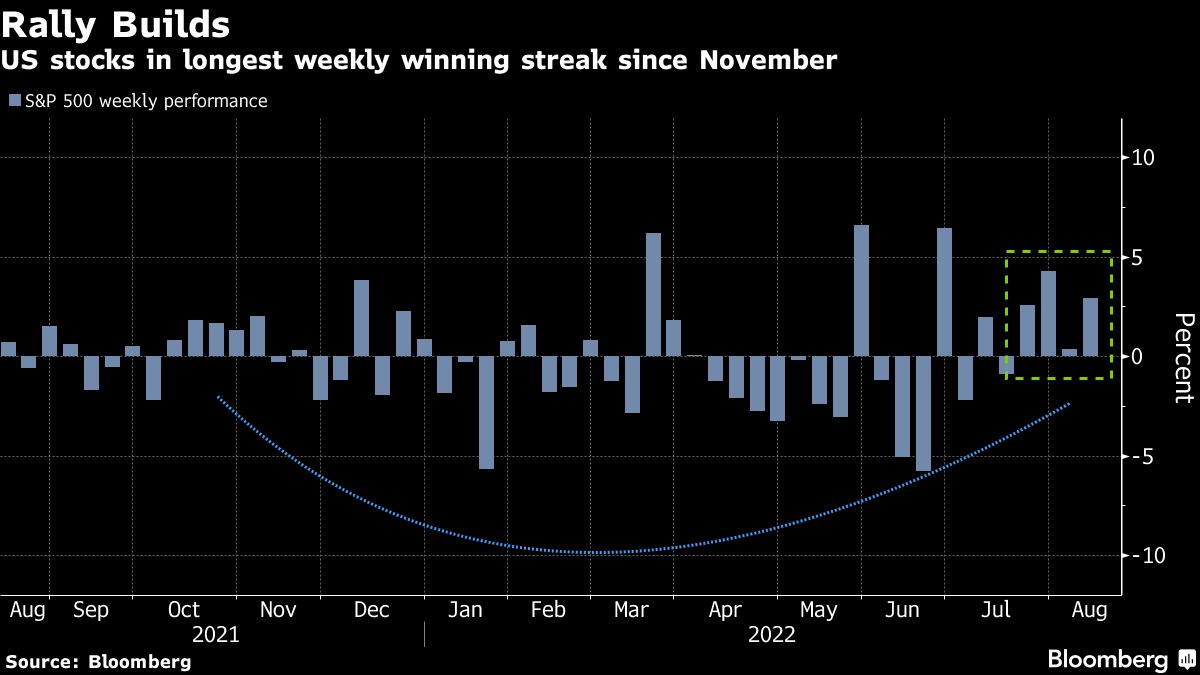Stocks finished the week on solid footing, with traders assessing whether an inflation slowdown could soon make the Federal Reserve reduce the pace of its most-aggressive tightening campaign in decades and prevent a hard landing.
Defying the crowd of skeptics who dubbed the rebound a bear-market rally, short-covering or unwinding of hedges, the S&P 500 notched its fourth straight week of gains — the longest winning run since November — with big tech leading gains Friday.
The gauge recouped half of its losses from January through June, topping the so-called 50% Fibonacci retracement level. It’s now sitting about 1.5% below its 200-day average — a threshold crossed by the Russell 2000 gauge of small caps.
As equities pushed higher, Wall Street’s fear gauge crumbled. The Cboe Volatility Index slumped back below 20, the average level since its inception. The VIX notched its eighth straight week of declines, the longest such stretch since 2019.
Meantime, the S&P 500’s 14-day relative strength index (RSI) topped 70 — which is seen by some traders as one indication of an overbought market.
The next few weeks will be crucial in determining the sustainability of the rally. With the earnings season almost over, economic reports mixed at best and many Fed speakers unwilling to sound too dovish, some analysts see the chances of a breather.
To Matt Maley at Miller Tabak, stocks are indeed getting overbought on a very-short-term basis, so a decline or sideways move “would not be the worst development in the world.”
For now, flows have been robust. Global equity funds lured $7.1 billion in the week through Aug. 10, Bank of America Corp. strategists led by Michael Hartnett wrote, citing EPFR Global data. Bond funds had an intake of $11.7 billion, while $4.3 billion was pulled out of cash.








 August 12, 2022 at 04:36 PM
August 12, 2022 at 04:36 PM













 Copyright © 2024 ALM Global, LLC. All Rights Reserved.
Copyright © 2024 ALM Global, LLC. All Rights Reserved.